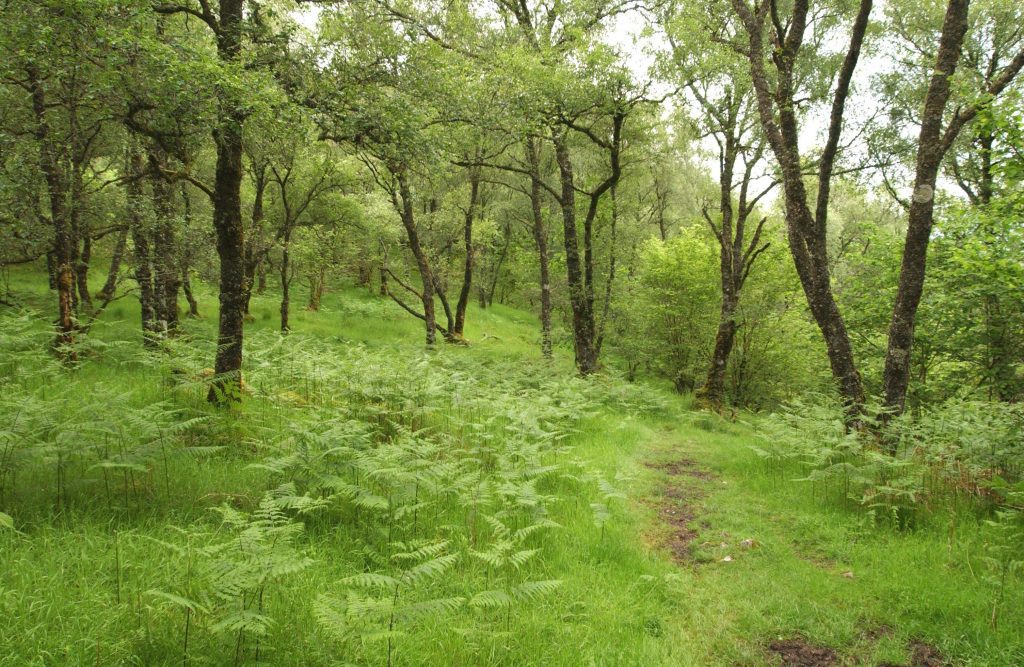Dumfries and Galloway Council’s Climate Emergency committed the Council to an ambitious aspiration of becoming a carbon neutral region by 2025.
The Adoption of the Climate Emergency Declaration and the supporting 12-point plan by in June 2019 created a starting point to focus the management and reduction of the Council’s carbon footprint and to lead by example when encouraging partners and stakeholders to do likewise.
The Council Budget agreed by elected members on 4 March this year made a commitment to update and refresh the Local Biodiversity Action Plan and the Forestry and Woodland Strategy. At the meeting of the Council’s Finance, Procurement and Transformation Committee (9 November) members will be asked to agree to allocating resources of £60,000 to update the documents over the next 18 months to fulfil this commitment.
The wealth of unique and diverse natural capital assets in Dumfries and Galloway provides a wide range of economic, social, and environmental benefits for the region.
The fundamental role of the natural environment and biodiversity in providing essential natural services and benefits for our economy, health and well-being is widely understood. The Council can play a key and central role in supporting positive biodiversity action through their leadership at the local level and through engagement with communities.
Nature-based Solutions have a critical role to play in responding to climate change, with a role in removing carbon, preventing emissions and helping us adapt to the impacts of climate change and there have been significant changes in forestry since the FWS was first produced.
The existing Local Biodiversity Action Plan (LBAP) was published in 2009 and the Forestry and Woodland Strategy (FWS) in 2014. The documents need to be updated to reflect legislative changes, regional priorities, and community aspirations, and to help respond to the dual challenge of climate change and biodiversity loss. These documents were previously prepared inhouse, but to reflect the complex, everchanging and complex nature of the subject, additional external resources will need to be commissioned.
Scotland’s Land Use Strategy is a strategic document that sets out the Scottish Government vision for sustainable land use in Scotland. The Scottish Government has committed to the establishment of Regional Land Use Partnerships (RLUPs) and the South of Scotland (Dumfries and Galloway and Scottish Borders Council) were selected as one of five areas to be regional pilots in 2021.
Chair of FPT Committee, Adam Wilson, said: “Our Council is clear that we have a leadership role here in Dumfries and Galloway to ensure we protect and enhance biodiversity. A number of community groups and local organisations are doing fantastic work in protecting local wildlife and I hope our new Strategies will reflect this already vital work and go further.
Our Administration budget agreed by elected members earlier this year committed to taking action to tackle climate change. Protecting and enhancing our local biodiversity and natural environment is essential to tackle climate change.”Vice Chair, Katie Hagman said: “We are in a period of national policy change as the Scottish Government responds to the twin challenges of the climate emergency and biodiversity loss. The Scottish Government has now committed to publish a new Scottish Biodiversity Strategy within 12 months of UN Biodiversity Conference (COP26) which is being held in November. Dumfries and Galloway Council will do all it can to help with this and address climate issues from a local perspective and our biodiversity strategy will support our partners, including the Southern Uplands Partnership and the Galloway and Southern Ayrshire Biosphere.”
Full report will be available at:
Agenda for Economy and Resources Committee on Tuesday, 16th November, 2021, 10.30 am (moderngov.co.uk)





